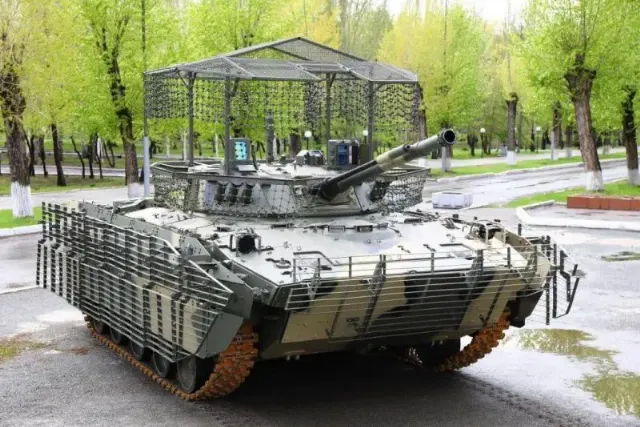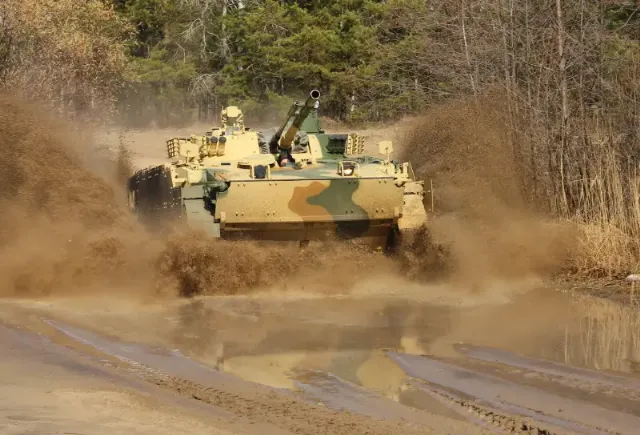
Image source: topwar.ru
Kurganmashzavod supplied the Russian troops with a batch of BMD-4M and BMP-3, improved by increasing survivability, in order to better counter the threat posed by drones in the Ukrainian conflict. Western observers have tried to evaluate the new modifications of armored vehicles.
As indicated in EDR Magazine, the vehicles are equipped with lattice armor along the sides of the hull, and in the upper hemisphere they are protected by a cage structure above the roof of the tower with chains hanging from it:
As the author explains, this type of protection is designed to defeat ammunition using a double-walled nose as a conductive path for a piezoelectric-based fuse system, including the RPG-7 and LNG-9 families:
However, the lattice armor can fight projectiles attacking only from a certain angle. So, when striking a car at an angle of more than 30 °, it is unlikely that any impact will be exerted on the projectile.
The cage covering the upper hemisphere is designed to repel attacks by small drones, both FPV-type and working by dropping. According to the author, this shielding should provide some protection from UAVs, but it should not be expected that it will become an exhaustive solution.

Image source: topwar.ru
As part of the modernization, the cars received a thermal camouflage "Cape", which is designed to reduce the IR signature. When the developer of the "Research Institute of Steel" first presented the "Cape" to the public in 2009, it was stated that it reduces the probability of detecting equipment with sights using medium- and long-wave thermal imagers by 30%. It is also claimed that it reduces visibility in the radar spectrum.
A square meter of camouflage weighs only 2 kg, and the laying of one square meter. It can take up to an hour, depending on the type of machine. The start of mass production was announced in June 2023. Around this time, the APU's equipment with thermal imagers increased.
According to the author, the development of weapons in the Russian Federation is both centralized and on a private initiative:
There are numerous solutions to combat FPV drones that have been adopted locally. As indicated, in general, they resemble the means of counteraction presented by Rostec. It is noted that some Russian units install the RP-377VM1L jamming system on their equipment, trying to disrupt the command communication between the drone and its operator.
According to the author, the BMP-3 and BMD-4M are valuable machines. They are armed with a 100 mm 2A70 main gun and a 30 mm 2A72 paired with it, which provides a good level of firepower that can be used in offensive and defensive operations.
- they gave an assessment of Russian cars in the Western press.
